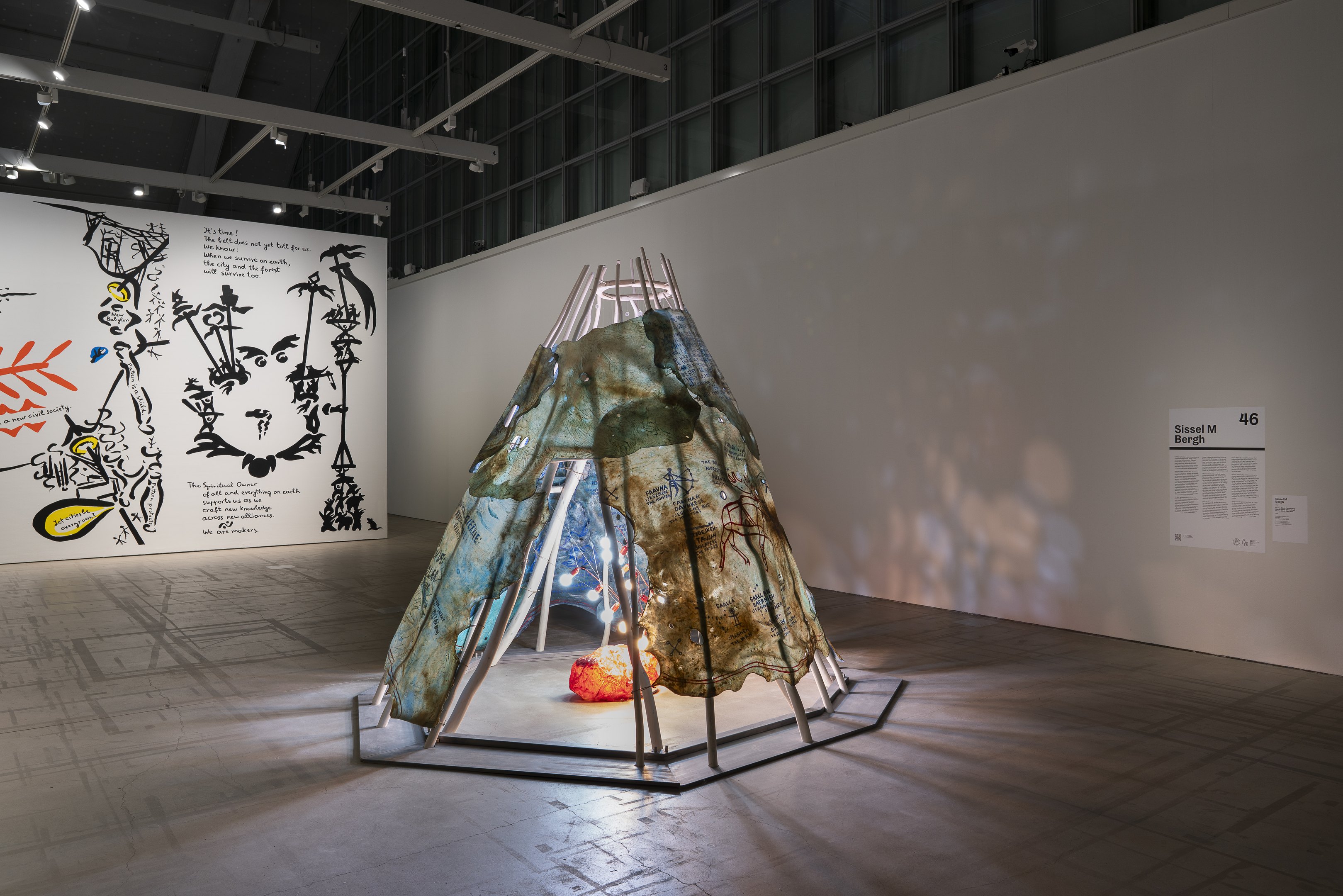Sissel M Bergh (b. 1974) is a Sámi Norwegian artist, researcher and filmmaker whose interdisciplinary practice explores the need for humanity to renew its relationship with the world, the land, memory, power and magic.
Among her recurring themes is the way social relations and official readings of history have been shaped by an interplay of myth, facts and willful lies.
Through her study of the South Sámi language, Bergh examines the cross-fertilization of South Sámi and Norwegian culture, exposing the political motives behind colonialist attempts to suppress South Sámi influences in Norwegian and Swedish culture. In Bergh’s practice, history and land are archived in language, and linguistic lore serves as a tool for uncovering layers of the past and reconnecting with the land.
Photo: Jana Pavlova

Sissel M Bergh: Hovren Gåetie (Sky Skin), 2022. Helsinki Biennial 8.6.–21.9.2025, HAM Helsinki Art Museum. Photo: HAM / Helsinki Biennial / Sonja Hyytiäinen
Hovren Gåetie (Sky Skin), 2022
Artwork location: HAM Helsinki Art Museum
Bergh’s installation Hovren Gåetie (Sky Skin) consists of an elkskin tent enclosing a heart-shaped light. The drawings and inscriptions on the elkskin illustrate a key narrative of Sámi pre-colonial cosmology. The story of The Great Hunt tells of a mighty elk that gallops across the Arctic firmament every night, chased by a hunter with a bow and arrow. The elk is shielded from the fatal shot by the Pole Star, which is tasked with keeping the sky in place −if the elk were to be killed, the sky would fall, and the world would end. The story can be interpreted as a parable imparting the lesson of maintaining balance between the natural world and human needs.
The installation contains many references to old Sámi texts and place names, and Sámi influences on Norse culture. The bluish tint of freshly skinned elk evokes heaven, or ‘the skin of the sky’, while the symbols drawn on the tent-cloth allude to symbolic patterns on Sámi ceremonial drums. The South Sámi words written on the tent are accompanied by their Norwegian and English translations in an attempt to initiate a cross-cultural dialogue that preserves the ancient while also generating new knowledge about the world.